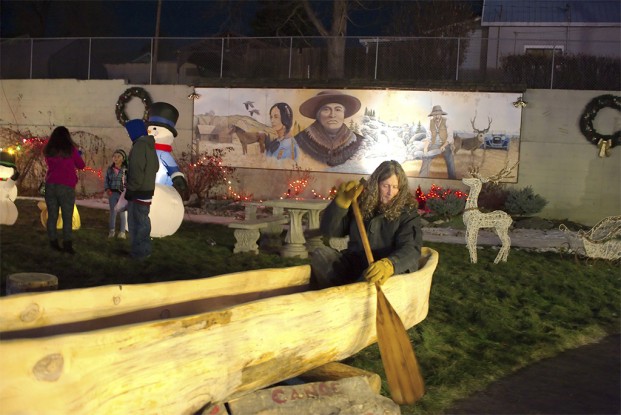
Churchill Clark brings his family legacy to life
TONASKET – Churchill Clark has the look of a man who stepped out of history.
The weathered face, flowing silver mane and laid back mannerisms speak of another time and place. So does the adze – a hand tool the Clark uses to transform 750 pound tree trunks into the kinds of dugout canoes used by Native Americans and European explorers alike in the days of the American frontier.
Many Tonasket residents met him – or at least his canoe – while he spent much of the fall hollowing it out by hand in the middle of Founders Day Park. The process of completing the canoe might have gone faster, but the affable canoe artist also spent hours sharing his craft, his story and a little bit of the history of the age of American exploration of the West.
He even has the blood of one of those explorers coursing through his veins. Churchill is the fourth-great grandson of William Clark, who along with Meriwether Lewis led the Corps of Discovery: a few dozen men dispatched by Thomas Jefferson in 1804 to explore the uncharted West shortly after the Louisiana Purchase.
That journey covered a northwest route from St. Louis to the Pacific Ocean at the mouth of the Columbia River. And since he was five years old, Churchill Clark was determined that he would follow, as literally as possible, in his great-great-great-great grandfather’s footsteps.
“My dad was trying to explain it to me,” Churchill says of that first conversation about his family history. “I was like, he was an explorer? He went camping? And Dad was like ‘Yeah, son, he went camping.’ I asked where he went – he said on a real long camping trip out west.
“I said, ‘Dad, I’m going to do it.’ I had no idea what I was talking about at all, but I was going to do it.”
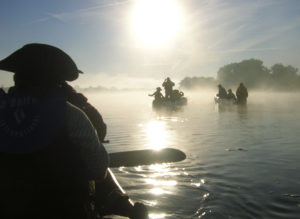
While in high school, Churchill says he noted that the bicentennial of the Lewis and Clark journey was approaching and set the goal of retracing the trail at that time.
As the date approached in 2004, he discovered he wasn’t the only one with that goal in mind.
“I got hooked up with these guys reenacting about a month before I went to St. Louis,” he said. “I had a one way ticket already; I was going to land in St. Louis with my backpack and get started. Instead I got thrown into a full scale reenactment with a keel boat, the men, a dog, everything.
“I had a couple of cousins already in the group that I’d never met. They weren’t as welcoming until they saw the family tree, then they welcomed me aboard. That was really cool and I thought William would be proud to have a couple of us out there.”
A reenactment can only go so far though, especially when it can’t be staged in a closed environment (as many Civil War reenactments are).
“We read Lewis and Clark’s journals daily so we were privy to what we were doing,” Churchill says. “We climbed the same hills, met a bunch of the tribes. But the tribes have moved all over the country. They’re in different places. You’ve got the dams on the rivers, the private land, especially when you’re on horseback. It wasn’t usually an issue but it can be. And riding through towns is definitely an issue on a horse.”
He said it was an interesting experience, keeping one foot in the 19th century and the other in the 21st. But one of the most rewarding parts of the journey was meeting with tribes.
“It’s been seven generations; the seventh generation is the one to restore the hoop,” Churchill says. “I learned through the tribes everywhere I went. It was a big deal. I met with chiefs that were descendents of the chiefs who met with William. We didn’t know what to do with the moment except make it good. They were like ‘Yeah, you look hungry, let’s get you something to eat. But let’s sweat you first.’ I got to drum in a powwow, and that was amazing. A real honor. I stayed in a Wanapum’s long house. So many examples of kindness and mutual respect out there.”
Some areas of the trail, are still nearly as isolated as they were in the early 1800s. But other areas have been moved or obliterated by logging despite efforts to protect it.
“Coming over Lolo Pass is about as remote as it gets,” he says. “There are even places where there are dirt ‘wannabe roads’ so you can get to certain areas. And these roads are very, very long at a slow pace. Resupplying, anything like that, well there’s no 7-11 and in some places no water. It was very much like it was for William.
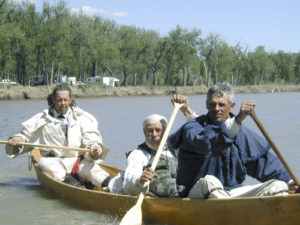
“There are views I will never forget up there. But there are also places where trails are being destroyed. Trees are being felled over the trail. They put up signs that say where the trail is, but it really isn’t, which is deceiving. Clear-cutting areas where they are supposed to be protecting the trail. I don’t like that at all. It’s very deceptive, but it’s really in your face when you’re out there. We really saw it on the Idaho side of Lolo.
“It’s different no matter how you look at it. It was the longest reenactment that was ever done and we did it the best we could.”
Passion renewed
Returning to civilization after more than two years on the trail is a mentally draining prospect. The original Corps of Discovery team struggled to reintegrate with society. Meriwether Lewis committed suicide in 1809 and has no direct descendents; two centuries later, Churchill similarly found himself suffering from depression.
Things got worse before they got better.
“I had a bad scooter wreck,” Churchill says. “I broke my face, my back, was blinded, lost my sense of smell and taste all at the same time. It rocked me.”
He’d carved a couple of dugout canoes during the expedition, but someone gave him a cottonwood log that he began to work.
“Knotty (the canoe) came to me,” Churchill says. “I went ahead and accepted this cottonwood even though I could barely see (surgery his since restored most of his sight).
“I did that one and it rejuvenated me. I took it across Nebraska, still blind. That was a trip. She was about 700 pounds at the time. After the journey, I carved another 3-400 pounds out of her, she’s at about 250. She’s in North Dakota now. Knotty the Dugout Canoe.”
In his travels, Churchill has carved about a dozen dugout canoes, using cottonwood, redwood, pine, whatever is available.
“All the trees have a different story,” he says. “I never know where I’m getting them, how I’m getting them, who I’m getting them with, who’s going to work on it with me.
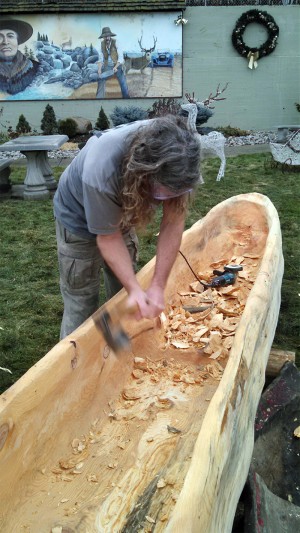
“This one (in Tonasket)is going to paddle the Okanogan with me. Down to the Columbia. I just don’t know when. It took forever for her to tell me her name, which is Crazy Mary, but she told me about the river trip about two weeks before. It was about time. We’re three blocks away from the river and she told me. It’s beautiful.”
And then, he says, another one of the best parts of carving out a canoe with a personality: coming to what amounts to an agreement on the water.
“You get in touch with the rivers,” Churchill says. “Once you go through the process of making one of these and you take it to the river, introduce it to the water, the three of you do the dance and she becomes a canoe. Once you do that, it’s hard to paddle plastic, you know?”
And then there is the sharing, and talking about that makes Churchill’s eyes light up as much as anything, despite lingering effects from his accident.
“I’m in pain 24/7,” he says of his back. “I don’t talk about it much but I have to stop on a regular basis. But it’s going to be hurting anyway; I can still do this and bring smiles to the neighborhood, open the kids’ minds, give them something creative.
“It just changes their lives. You see them open their minds up to the possibilities. At first it’s like the weirdest thing they’ve ever seen, but they can’t keep their hands off it. Then they realize, every once in a while, there’s one that wants to be a canoe carver. I show them what the adze is, tell them where to get one and tell them to go find a tree. They’re always open to that.
“But it’s more about opening your mind and following your dreams, no matter what they may be.”
He says he’s considering limiting his itinerant ways and possibly setting up a home base in the area. He’s still finding ways to share his art and history with others, including the descendents of the tribal leaders Lewis and Clark met with.
“I’ll never be able to top the experience of the reenactment,” Churchill says. “But I’m paddling the Missouri again, soloing with my rock star canoe. I’m meeting with the tribes along the way, offering to carve canoes for them to repay their kindness. All of them have said, ‘Yes. Please!’ They’re losing their carvers and I’m booked already to do make two canoes next year.
“I’m trying to plan everything out, trying to figure out how to get back here in time for Barter Faire next year.”
Whether he’s talking about his two year expedition in the footsteps of his ancestor, or his canoe carving tour, Churchill Clark knows where he’s been and where he’s going, even if it’s on his own sometimes unclear path.
“That was the story of the journey: the people,” he says. “It’s never the destination, it’s the ride. The people along the way make the journey what it is.”
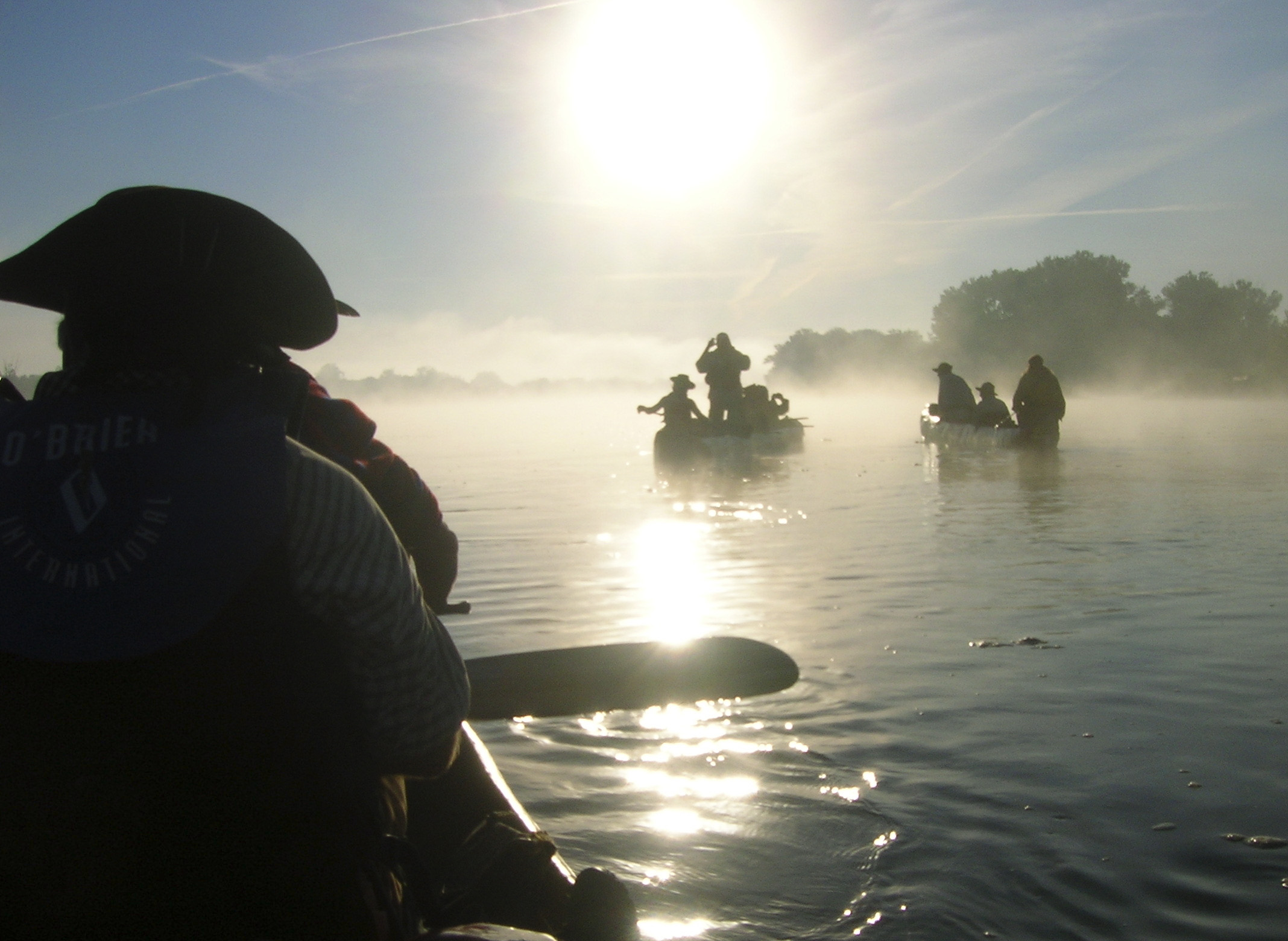
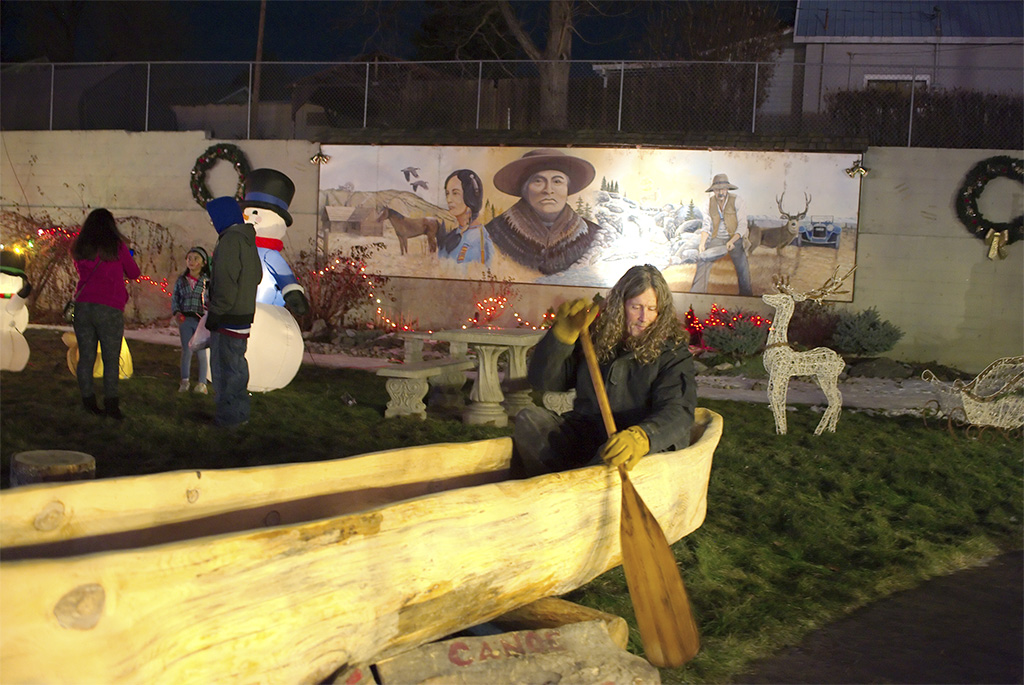


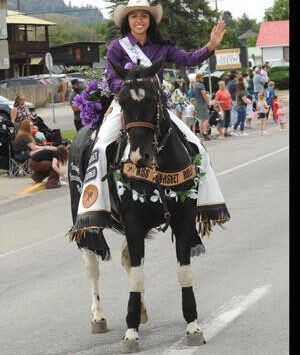
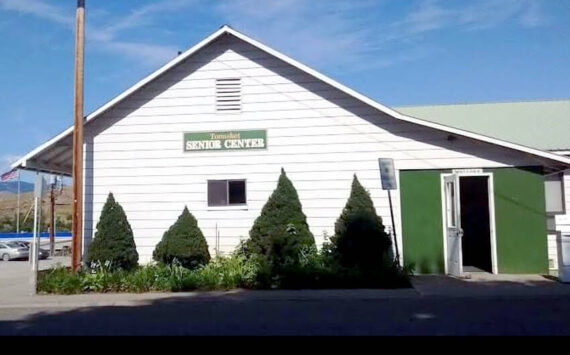
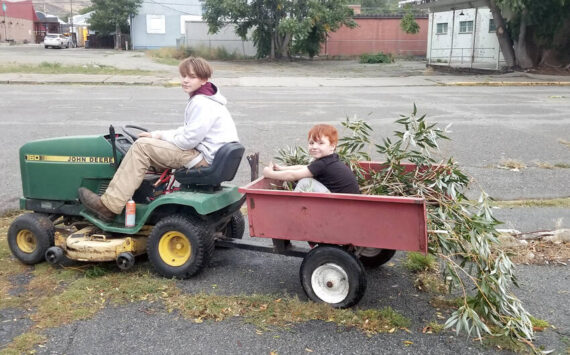

Comments are closed.